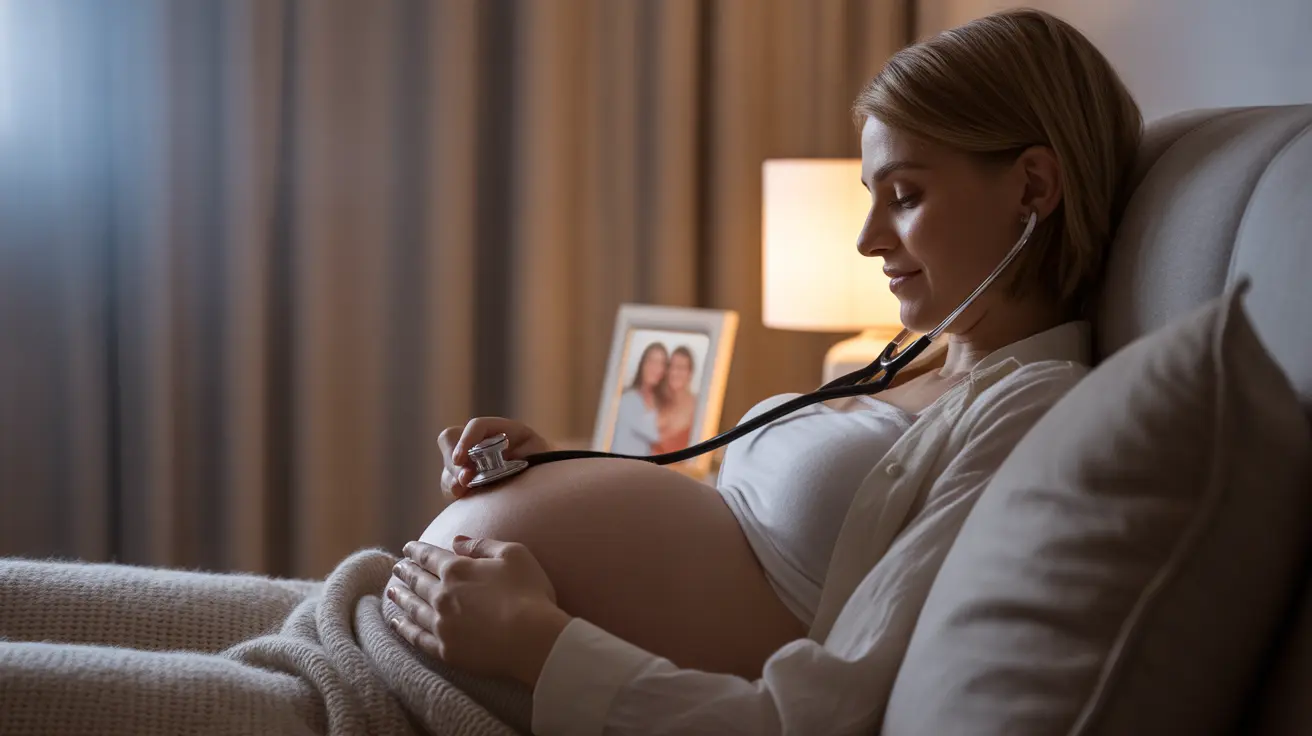For many expectant parents, hearing their baby's heartbeat for the first time is a magical moment that makes pregnancy feel more real. While medical professionals typically use specialized equipment during prenatal visits, some parents wonder about using a traditional stethoscope at home to listen to their baby's heartbeat.
Understanding when and how to hear your baby's heartbeat with a stethoscope can help you make informed decisions about at-home monitoring while ensuring you maintain proper prenatal care. Let's explore the details of using a stethoscope during pregnancy, including its limitations and best practices.
When Can You First Detect a Baby's Heartbeat with a Stethoscope?
The timing of when you can first hear your baby's heartbeat with a stethoscope varies significantly from pregnancy to pregnancy. Typically, a traditional stethoscope can pick up fetal heart sounds between 18 and 20 weeks of pregnancy. This is considerably later than other methods used in medical settings.
Several factors influence when you might first hear the heartbeat:
- Your baby's position in the uterus
- The amount of amniotic fluid
- Your body composition
- The quality of the stethoscope
- Your technique and experience level
Using a Stethoscope at Home: Best Practices
If you decide to try listening for your baby's heartbeat at home, following proper techniques can improve your chances of success:
Choosing the Right Equipment
Select an acoustic stethoscope with good sound quality. While electronic stethoscopes exist, traditional acoustic models are typically sufficient and more cost-effective for home use.
Finding the Right Position
The best position for listening is while lying flat on your back in a quiet room. Place the stethoscope's diaphragm low on your abdomen, just above the pubic bone. You may need to move it around slowly to find the best spot.
Understanding What You're Hearing
When listening for your baby's heartbeat, it's important to know what to expect:
- The fetal heartbeat is typically faster than an adult's (120-160 beats per minute)
- It often sounds like a galloping horse or distant train
- You may also hear other sounds like blood flow or digestive noises
Important Safety Considerations
While using a stethoscope at home is generally safe, there are several important considerations to keep in mind:
Never use at-home monitoring as a replacement for regular prenatal care. Your healthcare provider uses more sophisticated equipment and has the training to properly interpret fetal heart patterns. Additionally, they monitor other crucial aspects of your pregnancy that a stethoscope cannot detect.
Professional Monitoring vs. Home Listening
Healthcare providers use several methods to monitor your baby's heartbeat:
- Transvaginal ultrasound (early pregnancy)
- Fetal Doppler (starting around 10-12 weeks)
- Traditional ultrasound
- Electronic fetal monitoring
These methods are more reliable and can detect the heartbeat much earlier than a traditional stethoscope.
Frequently Asked Questions
When can you first hear a baby's heartbeat using a stethoscope during pregnancy? Most people can first hear their baby's heartbeat with a stethoscope between 18-20 weeks of pregnancy, though this can vary based on individual factors.
How can I use a stethoscope at home to hear my baby's heartbeat effectively? Lie in a quiet room, place the stethoscope low on your abdomen above the pubic bone, and move it slowly while listening carefully. Use gentle pressure and be patient as you search for the right spot.
What factors affect how easily I can hear my baby's heartbeat with a stethoscope? Key factors include gestational age, baby's position, maternal body composition, ambient noise levels, stethoscope quality, and user experience level.
Is it safe to listen to my baby's heartbeat at home with a stethoscope instead of going to the doctor? While using a stethoscope at home is safe, it should never replace professional prenatal care. Regular medical check-ups are essential for monitoring your baby's overall health.
What are the differences between hearing a baby's heartbeat with a stethoscope versus a fetal Doppler or ultrasound? Professional equipment like Dopplers and ultrasounds can detect heartbeats much earlier (around 10-12 weeks) and provide clearer, more reliable readings than traditional stethoscopes. They also offer additional diagnostic capabilities that stethoscopes cannot provide.




